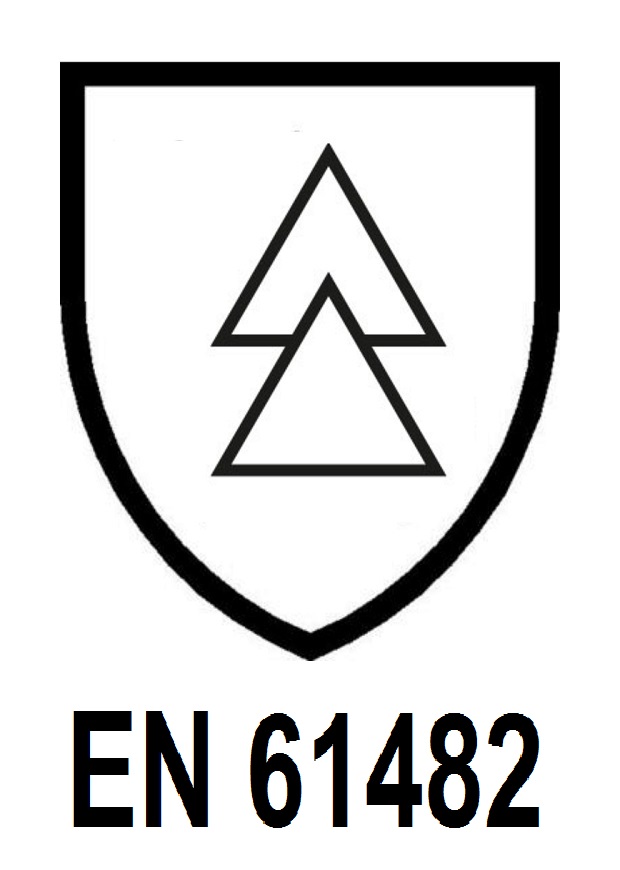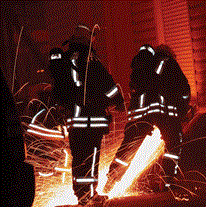EN61482 Workwear for protection against electric arc

Work wear against electric arc
The standard specifies test and classification for materials and clothing for wearing when at risk of exposure to an electrical arc. An arc flash occurs when there is a short circuit through the air across conductors, such a flash will result in numerous hazards including, amongst others:
- Extreme temperature (up to 12000°C at the core)
- Explosive forces (pressure wave)
- High noise levels
- Very bright light including Ultra Violet light
- Emission of plasma
- Toxic smoke and fumes
- Fast moving debris
- Hot liquids (in oil cooled or insulated equipment)
As a result injuries can include burns, blindness, lung damage, blunt trauma injury and hearing damage.
The test is known as the "box test". It exists in two test method versions: The "material box test", which includes heat transfer measurements and Stoll curve differential analysis (i.e. the rate of temperature rise in °C on the sensor face), and the "garment box test", which requires only a visual assessment of the garment performance. Both material and garment tests are carried out with a low voltage installation (400 V AC). The box-test standard defines two testing conditions: at the arc duration of 500 ms an arc current of 4kA (Class 1) respectively 7kA (Class 2).
The box test gives a pass or fail result with respect to the selected specific box test conditions and assessment criteria and does not give the value of the incident energy (e.g. usually expressed calories per centimetre squared (cal/cm2)) against which the fabric and therefore the garment will offer protection. The standard EN 61482-1-2 enables garments to be CE certified with respect to their box test class performance. It is left up to the user to assess for himself, whether the actual potential arc exposure situation in front of his low voltage equipment can be considered to be sufficiently simulated by an electrical arc of either 4 kA (Class 1) or 7 kA (Class 2) and duration 500 ms generated between an aluminium and copper electrode inside a plaster box of specific dimensions.
The level of protection provided by a fabric or garment is known as its Arc Thermal Protection Value, usually measured in cal/cm2 - it is more commonly known as the ATPV.
Features
- Class 1: tests at an arc current of 4 kA and arc duration of 500 ms.
- Class 2: tests at an arc current of 7 kA and arc duration of 500 ms.
Working directly with transformers, performing cable work, working in open electric distribution boxes or on electric home boxes, potential arc energy is from 240 kJ to 500 kJ or more. This means that, in some cases, the incident energy is higher than the class 1 “box test”, which explains why we also test according to the open arc test to give the garments an arc-rating in cal/ cm² (ATPV or EBT).
The purpose of protective clothing and other personal protective equipment is to provide escape time, to reduce burn injury level and to prevent aggravating the consequences to workers exposed to electric arcs. Check the protection factor given by the product (Class 1 or 2). Wear the garment always proper closed. The protection effect can only be reached by a combination of jacket and pants. Use additional equipment (gloves, helmet, visor, etc.) for more complete protection.



















